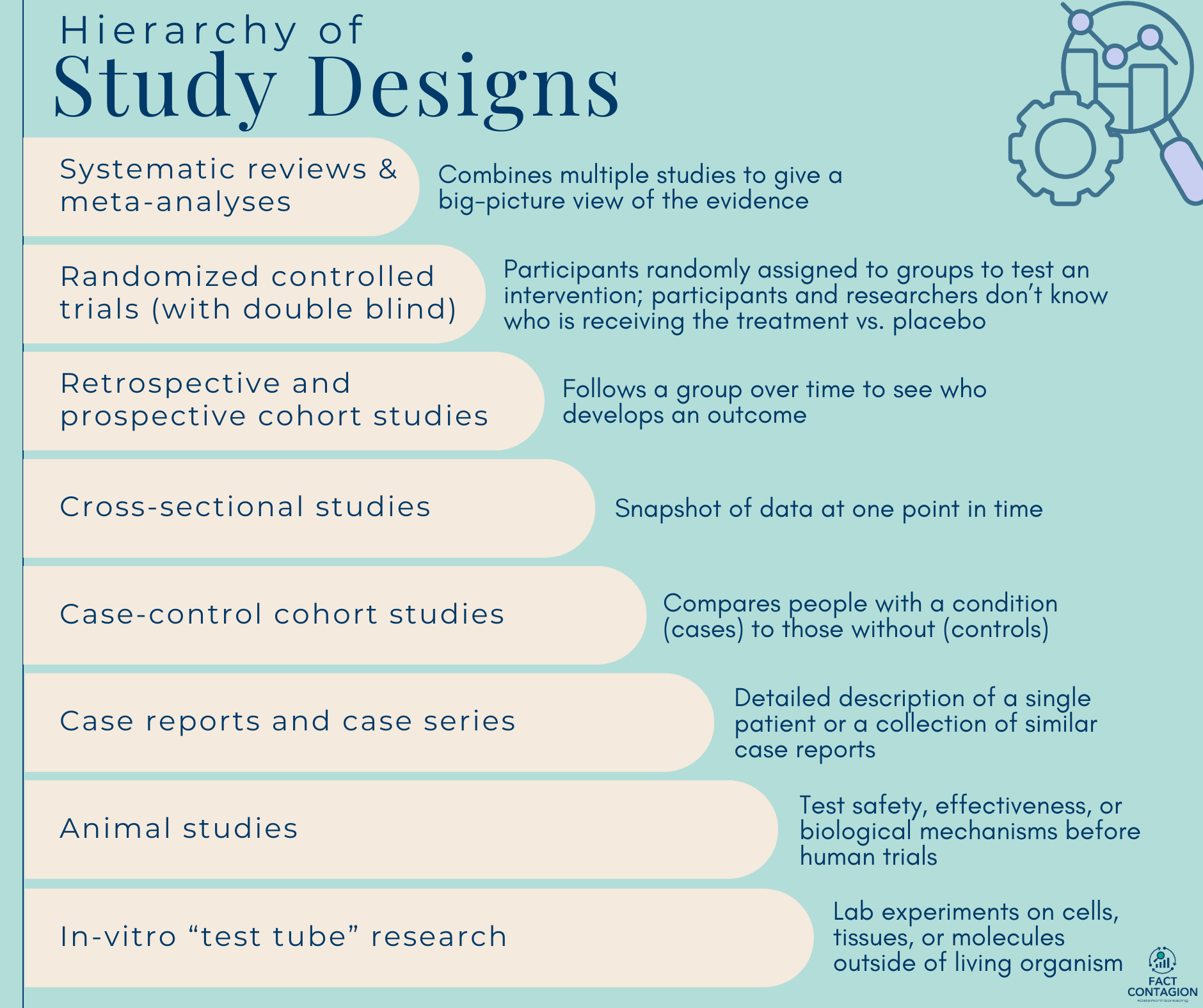How to interpret scientific studies

Research varies in reliability and rigor. In this post, learn about various study designs and statistical approaches, as well as how to spot biases and misleading claims. Understanding key scientific concepts can help you to separate fact from fiction and have more productive discussions about science and public health.

Not all scientific evidence carries the same weight. Systematic reviews, meta-analyses, and randomized controlled trials (RCTs) provide the strongest evidence. Observational studies examine health outcomes, disease patterns, and risk factors when controlled experiments aren't feasible. In vitro cell culture and in vivo animal studies lay the groundwork to form hypotheses. Always consider the study type before trusting a claim.

Scientific papers follow a defined structure. Each section has a specific role. Background/Objectives tell you why something was done. Methods tell you how it was done. Results tell you what was found. The discussion helps to interpret the findings. While you may be tempted to just read the abstract for key highlights, it's good practice to review the entire article to confirm what was selected for the abstract.

There are several statistical tests that can confirm whether study results are real or just random noise. But they need proper interpretation. Looking beyond p-values alone and considering confidence intervals, effect size, and potential biases is important when assessing the real-world impact of study findings.

Not all research findings will be reliable. Bias and confounding can distort results and lead to incorrect conclusions. Understanding these pitfalls will help you to critically evaluate research.

Spotting unreliable research is crucial! Small sample sizes, data manipulation, conflicts of interest, and sensational headlines can all distort science. Always ask: Is this study well-designed and trustworthy?

Final Takeaway
Understanding scientific studies empowers you to think critically, spot misleading claims, and make informed decisions. Not all research is created equal. By evaluating study design, statistical concepts, and potential biases, you can separate credible evidence from misinformation. Stay curious, question the headlines, and prioritize well-designed, peer-reviewed research for reliable conclusions.

